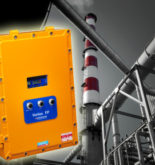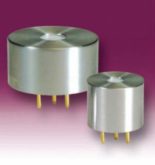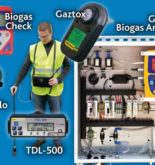Ground-gas monitoring is an important aspect of contaminated land site investigation and landfill management as the data is critical to the risk assessment process. The objectives of gas monitoring programs are to determine the true subsurface gas regime and predict how this may change in the future. This is currently achieved by discrete periodic static measurements of gas concentrations.
GasClam from Shawcity (UK) collects time series data. Improved measurement of flux is made and temporal variability can be quantified and accounted for. This will improve understanding of processes, thereby reducing
the uncertainty which is inherent in the inferences required in using measurements that are indirect and lacking in temporal resolution.
Contaminated land and landfill industry regulators recognise the need for more representative data but cost has prevented the collection of continuous records of ground-gas measurements. However, the availability of
reliable miniature infra-red sensors has recently been combined with innovative engineering to produce a new instrument; GasClam®, which will allow the collection of continuous data to become widely used.
The GasClam® allows secure, unmanned collection of continuous ground-gas data. It is manufactured from stainless steel, is intrinsically safe with ingress protection rated IP-68. It is designed to fit in a 50 mm borehole and measures CH4, CO2, O2, H2S, CO, VOC’s concentrations, as well as atmospheric pressure, borehole pressure and temperature. Water level can also be measured with an optional pressure transducer. The device fits securely within a borehole whilst also allowing for controlled venting of the borehole. Sampling frequency is variable from 2 minutes to once daily. Data is downloaded through a notebook PC using an RS 232 communication cable. Telemetry is also available. It can be powered for 3 months by two alkaline D-cells based on hourly sampling.



